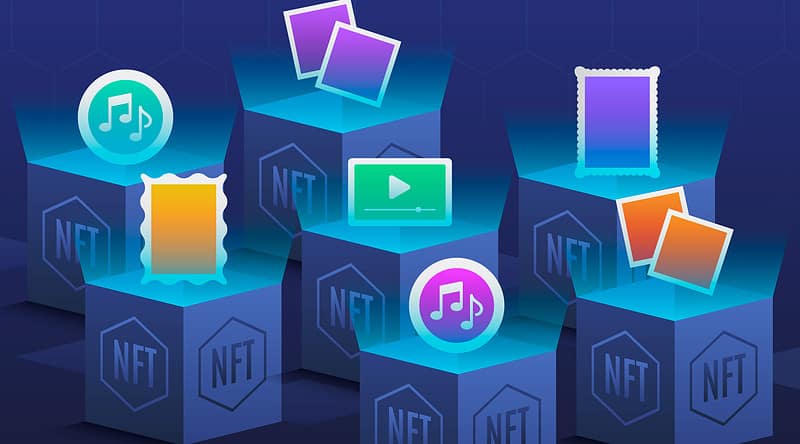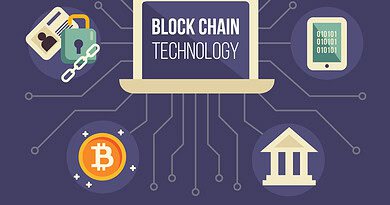Are NFTs a Scam? 3 Important Facts About NFTs You NEED to Know Before Investing a Dime
Hey there! You might have heard of NFTs, the new buzz in town. They have been making headlines with multi-million dollar sales and celebrity endorsements. But beneath the glitz and glamour lies a complex reality riddled with questions and skepticism. Are NFTs a scam? Or are they the future?
Are they just a cleverly disguised pyramid scheme fueled by hype and speculation? Or are they a revolutionary step forward in digital ownership?
This article delves deep into the world of NFTs, separating fact from fiction and unpacking the arguments on both sides. We’ll explore the underlying technology, the potential for legitimate use cases, and the undeniable presence of scams and security risks.
Examining the current landscape and its intricate web of possibilities, we aim to equip you with the knowledge to navigate this emerging space cautiously.
So, buckle up as we embark on a journey through NFTs’ exciting yet often murky world. Are they the future of digital ownership or a fad destined to fade?
Join us as we uncover the truth, one pixel at a time.
1. Unveiling the Layers: Diving into the Anatomy of NFTs
Before we dissect the “Are NFTs a scam?” question, let’s establish a firm understanding of what we’re dealing with.
So, what is an NFT?
At its core, an NFT is a digital asset that transcends the fungibility found in traditional cryptocurrencies. Unlike interchangeable tokens such as Bitcoin or Ethereum, each NFT is a unique, one-of-a-kind entity, indivisible and irreplaceable. This signifies that an NFT is more than just ownership but also a proof of authenticity in the digital realm.
So, imagine an NFT as a unique certificate of ownership digitally inscribed on a blockchain (i.e., a shared, public ledger). This certificate isn’t for physical objects but for digital ones like artwork, music, and even tweets. Think of it like owning a signed Picasso masterpiece, except the signature and canvas are both digital.
Now, why are these digital certificates generating such a buzz? Let’s break down the main arguments for and against NFTs:
For the Believers:
- NFTs revolutionize ownership. They empower creators to claim true ownership of their digital work. In doing so, it potentially disrupts traditional models and ensures fair compensation.
- NFTS unlock utility. They go beyond mere collectibles. You can use them to access exclusive communities, in-game items, or even real-world assets.
- NFTs spark innovation. This technology opens doors for exciting possibilities in various fields, from ticketing and identity management to supply chain transparency,
For the Skeptics:
- NFTs are a speculative bubble. Its prices often soar based on hype and speculation and not intrinsic value. This raises concerns about future crashes.
- NFTs impact the environment negatively. The energy consumption of some blockchain networks used for NFTs sparks ecological anxieties.
- NFTs are a scam. Rug pulls, phishing attacks, and fraudulent activities plague the space. This erodes trust and highlights the need for regulation.
This is just the tip of the iceberg. Let’s delve deeper into each argument, examining real-world examples and separating hype from reality.
2. Navigating the Minefield: Separating Hype from Reality
The Speculative Bubble
It’s true. Some NFTs sell for seemingly ridiculous sums. That’s because they’re fueled by celebrity endorsements and influencer marketing. Remember the Bored Ape Yacht Club, where pixelated ape images fetched millions?
Yet, consider the Mona Lisa – its value isn’t just the paint and canvas, but its historical significance and cultural impact. So, while some NFTs might be purely speculative, others may hold genuine artistic or sentimental value, just like traditional art.
The Environmental Impact
The energy consumption of specific blockchains is undeniable. Yet, advancements like “proof-of-stake” mechanisms are reducing energy use significantly. Moreover, consider the environmental impact of traditional art production and transportation. NFTs could pave the way for a more sustainable future in the art world.
The Scamdemic (The Actual NFT Scams)
We also have serious concerns about NFT scams. We’ve seen NFT projects abandoned by creators after raising funds, a.k.a, rug pulls. Then, there are phishing attacks targeting unsuspecting investors. From the looks of it, it screams a “yes!” to the “Are NFTs a scam?” question.
But remember, every new technology attracts bad actors. Like the early days of the internet, the NFT space is maturing, with stricter regulations and security measures on the horizon.
3. Beyond the Hype: Unveiling the True Potential of NFTS
While the initial NFT frenzy focused on million-dollar pixelated apes, the underlying technology holds far greater potential than digital collectibles. By empowering creators, fostering vibrant communities, and seamlessly integrating with the real world, NFTs are poised to reshape various industries.
Here are some of the ways how:
Breaking Free: NFTs Empower Creators with Ownership and Direct Connection
By leveraging the blockchain’s power, NFTs rewrite the rules for creators. Gone are the days of battling confusion and relying on platforms with hefty cuts. Instead, creators claim immutably verifiable ownership of their digital work. This grants them complete control and freedom to manage it. This shift empowers them to bypass gatekeepers. It allows them to connect directly with audiences. As a result, these creators can maximize their earning potential through independent sales.
NFTs aren’t just a trend. They’re a revolution in creator empowerment, fostering a future where artists and audiences connect directly, benefitting both.
From Likes to Loyal Communities: How NFTs Redefine Fan Engagement
NFTs go beyond fleeting likes and shares. They foster meaningful connections and direct interactions between creators and fans. Owning an NFT can unlock access to exclusive communities where creators engage directly with their supporters, fostering a sense of belonging and shared passion.
But it doesn’t stop there. NFTs can also fuel collaborative opportunities. This empowers creators to work together on projects or offer community-driven initiatives. This results to building a sense of shared ownership and deeper engagement.
The possibilities extend even further with Patreon-like models, where fans can support creators through fractional ownership of NFTs. This provides ongoing funding and a deeper level of involvement in the creative process.
In essence, NFTs are reshaping the fan experience. It transforms fleeting interactions into loyal communities. One that’s built on shared ownership, collaboration, and meaningful connection.
Bridging the Digital and Physical: NFTs Step into the Real World
The lines between the digital and physical are blurring thanks to NFTs’ real-world integration.
Imagine owning a fraction of a luxurious apartment in New York City, represented by an NFT. Or, picture attending a concert with exclusive VIP access unlocked through your music NFT. These are just a few possibilities.
Real estate, fashion, gaming, and even supply chains are embracing NFTs. Companies like St. Regis Aspen offer fractional ownership of properties through NFTs. Meanwhile, Nike is experimenting with digital sneakers that unlock physical counterparts. NFTs can also track the origin of physical goods. This could be a groundbreaking technology for combating counterfeiting and ensuring authenticity.
This integration isn’t without challenges, like legal frameworks and accessibility. But the potential for transforming industries and creating unique experiences is undeniable. As NFTs bridge the digital and physical realms, we’re witnessing the birth of a future where ownership, access, and experiences are redefined.
Are NFTs a Scam? The Verdict
So, are NFTs a scam?
Well, it’s complicated.
The answer, as with most complex issues, is nuanced.
Like a digital Jackson Pollock painting, the NFT landscape is a vibrant mix of colors, textures, and possibilities. Of course, the concerns about scams, environmental impact, and speculative bubbles are valid. But, dismissing the entire space as a “scam” ignores its potential for genuine innovation and positive change.
Remember, the internet wasn’t built overnight, nor was e-commerce embraced by everyone at first. NFTs are still in their early stages, evolving and learning from mistakes. So, instead of asking “Are NFTs a scam?” Ask, “What can we do to keep ourselves safe?”
As responsible participants, we can influence this evolution by:
- Educating ourselves: Research projects, understand the technology, and avoid blindly following trends.
- Demanding transparency: Support creators and platforms with clear roadmaps, ethical practices, and robust security measures.
- Advocating for regulation: Encourage responsible legislation that protects investors and fosters a healthy NFT ecosystem.
Ultimately, the future of NFTs is not a binary choice between “scam” and “revolution.” It’s a canvas of possibilities waiting to be painted, and the brush lies in our hands. Choose wisely. Engage critically. And remember – the most valuable NFT you own might not be a digital artwork, but the informed perspective you bring to this ever-evolving space.
Additional Resources for Learning More about NFTs
- Ethereum Foundation: Learn about NFTs and the Ethereum blockchain.
- CoinMarketCap: Track NFT prices and trends and explore different projects.
- OpenSea: The largest NFT marketplace where you can explore various projects and buy/sell NFTs.
- Rarible: Another popular NFT marketplace with a focus on community-driven curation.
- NFT Now: News and information hub for the NFT space, offering articles, interviews, and events.
Disclaimer: This article is for informational purposes only and does not constitute financial advice. Please do your own research before making any investment decisions.
Remember, the power to shape the future of NFTs lies with you. Be informed, be critical, and be part of the conversation.




